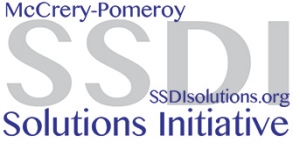July 14, 2016
Why we need a 1:1 ratio of healers to lawyers when designing reforms for “comp”
While Linda Rudolph was Medical Director of the California workers’ compensation regulatory agency in the mid-1990’s, she defined workers’ compensation as a medically-driven legal system. I still use that definition when I give my annual lecture on work comp at the Harvard School of Public Health. Based on my interpretation of what that succinct and elegant summary really means, I believe that any group setting out to improve the workers’ compensation system should have a roughly equal number of people at the table who were originally trained in a healing art and the law — because of the way their minds were indelibly imprinted by that training.
As you may have heard, I was among 38 workers’ compensation experts of various stripes who participated in the Workers’ Compensation Summit co-hosted by blogger Bob Wilson from workerscompensation.com and blogger Judge David Langham, Deputy Chief Judge of the Florida workers’ compensation system.
I was surprised as we went around the room introducing ourselves. I was one of only two physicians in the room. There were no others with healthcare professional training. There was one person whose original training had been as a vocational counselor. By far the largest group had had legal training, although many of them were now in other jobs — judges, legal scholars, workers’ compensation system administrators, corporate executives.
Training in both law and in medicine shapes a student’s worldview, teaches a precise vocabulary, builds a foundation of factual knowledge as well as rigorous intellectual discipline, and defines how things work in a certain part of human life. The training also establishes a finite range of things that seem possible, and offers a particular inventory of potential solutions. A behavioral acculturation process accompanies it, too. The point here, though, is that the actual shape and content of those worldviews, vocabularies, knowledge bases, intellectual disciplines, possibilities and solutions — and behavioral cultures — differs in most respects between the two professions.
Earlier in life, I spent 20 years as a physician married to a lawyer. For many reasons, it was kinda like a nice cat being married to a nice dog. We had a primordial kind of incompatibility. But I did get to know what made that particular dog tick pretty well.
Lawyers seem to have a predilection for solutions that involve clarifying rights, justice, entitlements, boundaries, and who is responsible to pay for what. Lawyers are trained to advocate for their clients’ rights and interests. Most lawyers seem to spend an awful lot of their time and energy anticipating arguments or actually arguing, fighting, and trying to win — because the everyday grist of their vocational mill is broken promises and disputes.
As I was pondering the difference between the “head set” of medicine and law, I found a quote from an article in the May 31 Boston Globe about a 35 year old man, a published author and poet, now graduating from Yale Law School — who at age 16 had hijacked a car at gunpoint and served 8 years in prison. He said “The law is a way to think and argue, and a way to find solutions….. Law is the language of power, and understanding that language is important to understanding power.” This quote struck me — not because he’s so amazing (which he obviously is) but because he articulated so precisely what I had predicted a lawyer would say.
Physicians and others in the healing professions have a predilection for solutions that reduce peoples’ suffering and restore the integrity of their bodies/minds. Medicine has nothing to do with winning. The first precept of medicine is to do no harm. Physicians are trained to advocate for their patients’ health, to meet their immediate needs today and maximize their future well-being in the future. The everyday grist of their vocational mill is providing comfort, relief, and reassurance to a stream of patients coming through the door with symptoms, with bodies or minds that aren’t working right, distressed and worried about the meaning of those things for their health and everyday activities (and often secretly fearing death).
In my view, a good “medically-driven legal system” for people injured at work should concern itself primarily with helping injured workers get back on their feet. That requires paying roughly equal attention to
- Helping them manage any life predicament the injury has caused (reducing worry, suffering, and distress, arranging good care promptly that maximizes healing and restores function as quickly as possible, preserving daily routine, minimizing work disability and job loss or providing assistance to find a new job quickly. The goal is to get everyday life back to normal as soon and as completely as possible. Time spent in limbo is destructive.
- Minimizing their short-term financial stress as well as long-term financial loss, sorting out their rights, and dealing with disputes.
Everyone’s goal should be to expedite the activities in #1 even if there are difficulties in #2, instead of allowing #2 to delay #1 as is common today.
